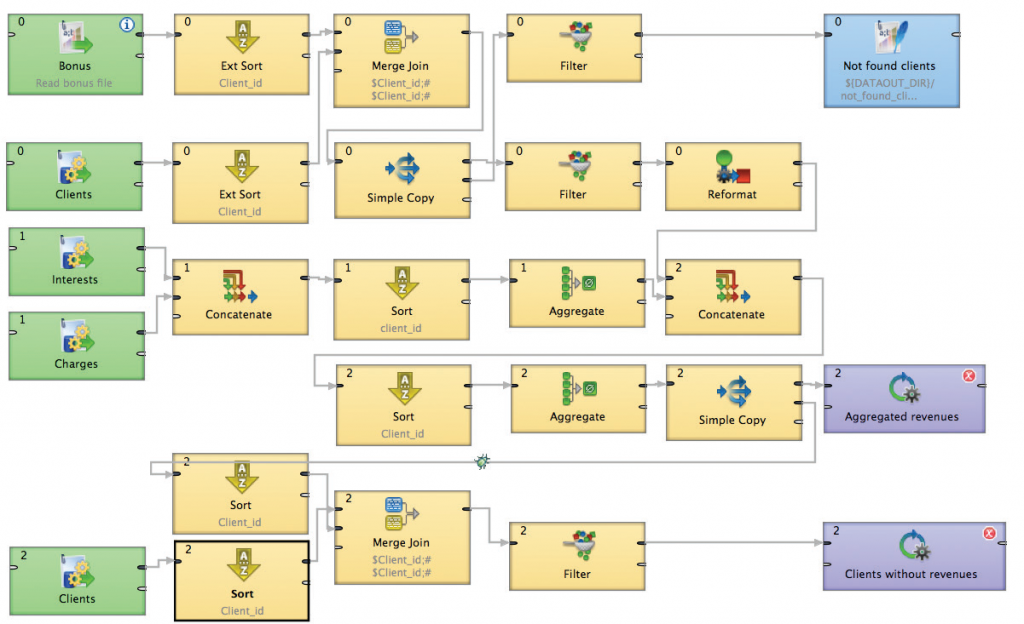Since I worked with Roman Stanek’s company Systinet back in the 2000s (sold to Mercury Interactive in 2006 and now part of HP), I’ve been following his subsequent venture, GoodData, with ongoing interest. Founded in 2007 in San Francisco, GoodData delivers the GoodData Open Analytics Platform, a Business Intelligence (BI) Platform-as-a-Service (PaaS) offering. GoodData positions itself as a leader in “end-to-end” Cloud analytics, and to date has more than 140,000 users worldwide.
 GoodData’s central differentiator – for better or worse – is their PaaS architecture. Building a Cloud-only offering starting as early as 2007 could be thought of as prescient, an example of Wayne Gretzky’s “skate to where the puck will be.” On the other hand, it’s possible they were a bit too far ahead of the market, as to this day they work best with Cloud-based data, and most enterprises have yet to move a majority of their data to the Cloud. As a result, to better access non-Cloud data, GoodData offers numerous connectors for accessing corporate information sources.
GoodData’s central differentiator – for better or worse – is their PaaS architecture. Building a Cloud-only offering starting as early as 2007 could be thought of as prescient, an example of Wayne Gretzky’s “skate to where the puck will be.” On the other hand, it’s possible they were a bit too far ahead of the market, as to this day they work best with Cloud-based data, and most enterprises have yet to move a majority of their data to the Cloud. As a result, to better access non-Cloud data, GoodData offers numerous connectors for accessing corporate information sources.
For those customers who are able to take full advantage of GoodData’s platform, however, its end-to-end architecture provides deeply differentiated capabilities to a wide range of users. Instead of a traditional, piecemeal BI offering based on traditional data warehouse architecture, GoodData’s PaaS works with the customer to support the entire analytic problem from start to finish. The result is an analytic “ecosystem” that includes applications, solutions, workflows, and integration with existing on-premise and Cloud-based technologies specific to the needs of each customer.
Also differentiating GoodData from other BI tools on the market are the variety of deployment options. In addition to the primary GoodData Platform public PaaS offering, they also offer a white label option called “Powered by GoodData” that allows customers to offer the GoodData platform under their own brand. Zendesk and Marketron are two referenceable white label GoodData customers. In addition, the third deployment option consists of prebuilt BI dashboards for “out of the box” template-based functionality for customers who don’t want to take the time to customize the dashboards and other components of the platform.
The GoodData Business Agility Story
GoodData supports enterprise business agility requirements in several ways. Instead of relying upon older, inflexible data integration technologies, GoodData provides a set of lightweight connectors and the ability to connect to several different types of databases and protocols. The platform also offers a range of flexible transformations for those customers who don’t want to code their own, as shown in the illustration below:
The GoodData Data Integration Service Modeling Tool (source: GoodData)
The ease of use of this modeling tool is only one part of GoodData’s strategy to bring BI to a wider range of users. After all, different individuals tend to have different BI and data analytics requirements, so the ability to analyze any or all enterprise data combined with a toolset that most people can use (depending upon the type of information the customer wishes to make available for analysis) provides a higher level of agility than other BI tools on the market.
The big picture for GoodData is a shift in perspective on what Business Intelligence really is, what you do with it, and who gets to interact with the enterprise’s information as a result. Traditionally, IT has acted as the gatekeeper of corporate information, doling out no more than the business asks for, often hours or days later than the request. GoodData shifts the control of information to the user, who is now empowered to use the visualization, analytics, and data integration capabilities they require to find, manipulate, and understand the ever-increasing quantity of information that runs the business – how they need it, when they need it, and in a form that provides the insight each user requires.
At the time of writing, GoodData is not an Intellyx customer.




